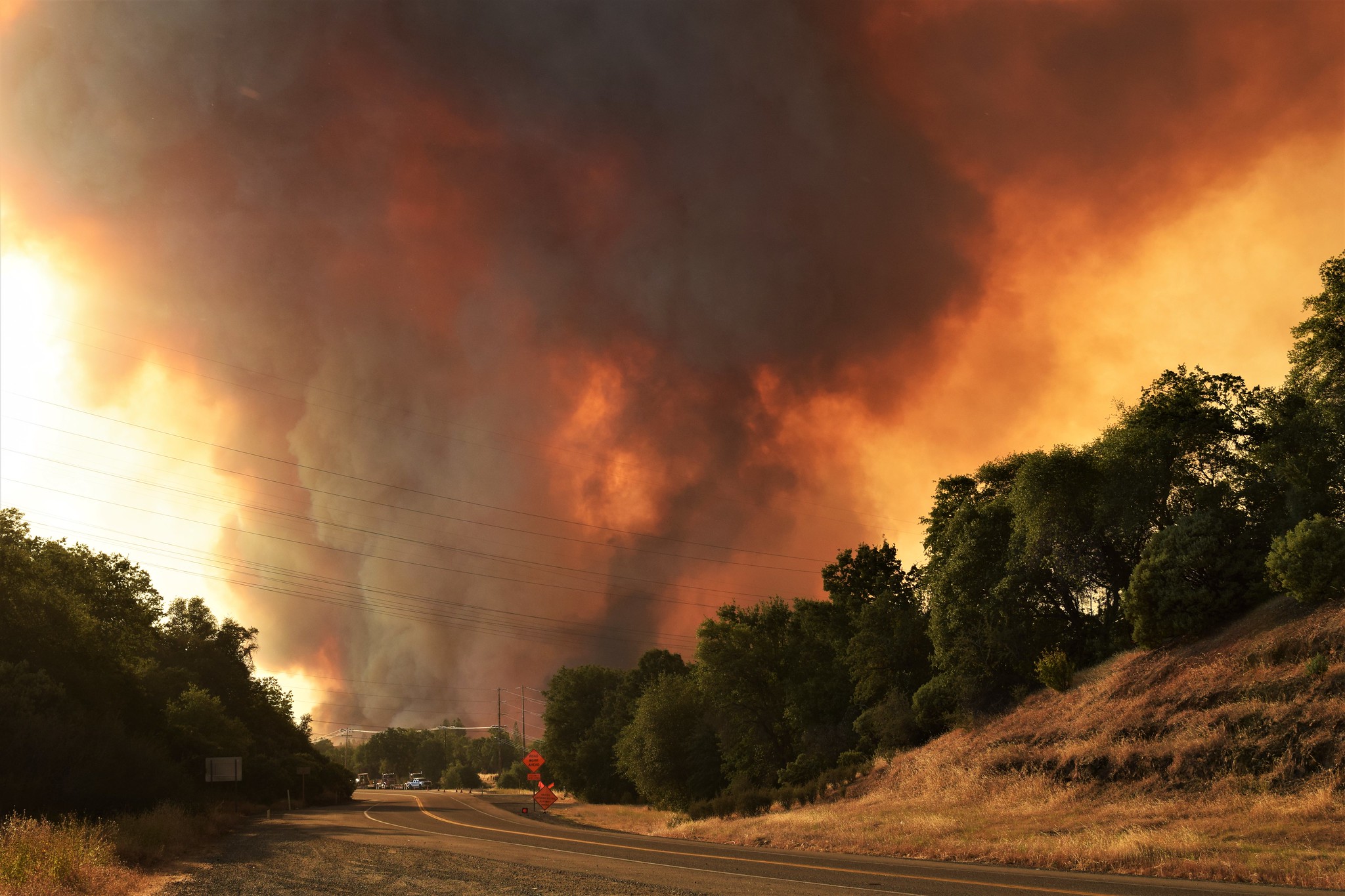

Wildfire is a normal presence across many California ecosystems, given the state’s dry climate. But the frequency and intensity of fires has grown in recent years—a result of a complex equation involving fire suppression, climate change, and people—to the point that it seems the state is always ablaze. Many of us are already familiar with the standard culprits, but there’s one aspect of this formula that doesn’t get much coverage: the kindling abilities of invasive grasses.
Invasive plants have been making their way into the state since the Spanish were building missions in the 1700s, says Matthew Brooks, research ecologist at the USGS Western Ecological Research Center. As more people continued to settle in the area, so did stray seeds. The plants, most of Mediterranean origin, were often introduced accidentally through animal feed.
There are dozens of these weeds, but ecologists are most worried about a few species; these include cheatgrass, red brome, ripgut brome, and medusahead, according to Jutta Burger, science program director at the California Invasive Plant Council. Especially in Southern California, many coastal and inland valley hills are coated with these plants, the muted green of scrubland and chaparral receding to make way for golden-brown grasses. “In a lot of our landscapes we have a carpet of these fine fuels,” says Burger, “We didn’t have that historically.”
Cheatgrass and other annuals are highly competitive and extremely flammable. While other annual species, like native wildflowers, wilt and rot after going to seed in spring, the grasses keep standing. Grasses are rich in silica, which makes their blades sturdy enough to stick around into the summer and fall, long after they lose their greenness. When a fire sparks, they become kindling, fueling the blaze until it can catch onto woodier shrubs and trees.
Then, after a fire, the grasses are the first to sprout back up. They grow in densely, beating out slowing-growing shrubs. And when shrubs and other native perennials do return, they can no longer take root because the flammable grasses increase fire frequency. “The shrubs don’t really have a chance to mature and drop seeds [with more frequent fires] so the seedbank can’t allow for reestablishment,” says Burger. “Instead, you have a conversion to a grassland through a more rapid fire cycle.” With two or three fires in a row happening less than five years apart, a coastal sage scrub plant community can be replaced by invasive grasses.

In semi-arid and arid California lands, grasses are also upping fire frequency. An inland coastal sage scrub environment may have one fire every few decades, but Brooks estimates that frequency has gone down to around every five years in some places.
In California’s Inland Empire, located east of Los Angeles, the region’s congested highways play another surprising role in this change. Brooks explains that some of the nitrogen in vehicle exhaust is deposited on hillsides, where it becomes a fertilizer for plants. Cheatgrass can use those nutrients faster than native plants and therefore proliferate even more, speeding the shift toward a grassland and more frequent fires. “[Nitrogen from cars] basically supercharges [invasive grass] recovery and growth, at the expense of the native species,” says Brooks. That means car emissions are setting the state ablaze in ways beyond their standard warming of the climate.
After the current fires in scrubby Southern California hills die down, Burger says “we can predict an explosion of grasses after them.” Even the Kincade Fire in Sonoma County could enable the growth of annual grasses in what is otherwise an oak-filled savanna. Consistent fires, stoked by dry grasses, can burn up seedlings, turning the landscape into grassland.
“[The grasses are] the biggest hazard in our deserts,” says Brooks. “Their presence adds a fuel that wasn’t really there before.” In California’s desert landscapes, the land previously only burned every few centuries. But now, in some parts of the Mojave Desert, there have been two or three fires since the 1980s. Where before a flame may not have been able to spread through the spotty vegetation of a desert, introduced grasses act as a bridge between shrubs, Joshua trees, and cacti. In these regions, where the native plants are slow to recover, annual invasive grasses threaten to fundamentally reshape communities.
As the grasses, a changing climate, and human land management combine to create a fiery synergy, combatting the shifting landscape can seem impossible. Burger says that in some cases active restoration—planting native species—can help. But even that can be challenging, because if a fire burns through a replanted area all those seedlings will be scorched, adds Brooks.
As long as the climate continues to warm, it may not be possible to stop some of these changes. What we can do is address our tendency to spark fires, says Burger. This includes better vegetation maintenance by utility providers, insulating power lines or putting them underground, and reducing dry brush around communities adjacent to wildlands. For brush removal, some landowners have hired herds of goats to trim down the vegetation naturally, as a Los Angeles-area library did. “It’s really tough to get a handle on this [fire increase] because there are so many factors,” says Burger. “We are the cause of most fires, so we need to look at how can we reduce ignitions.”